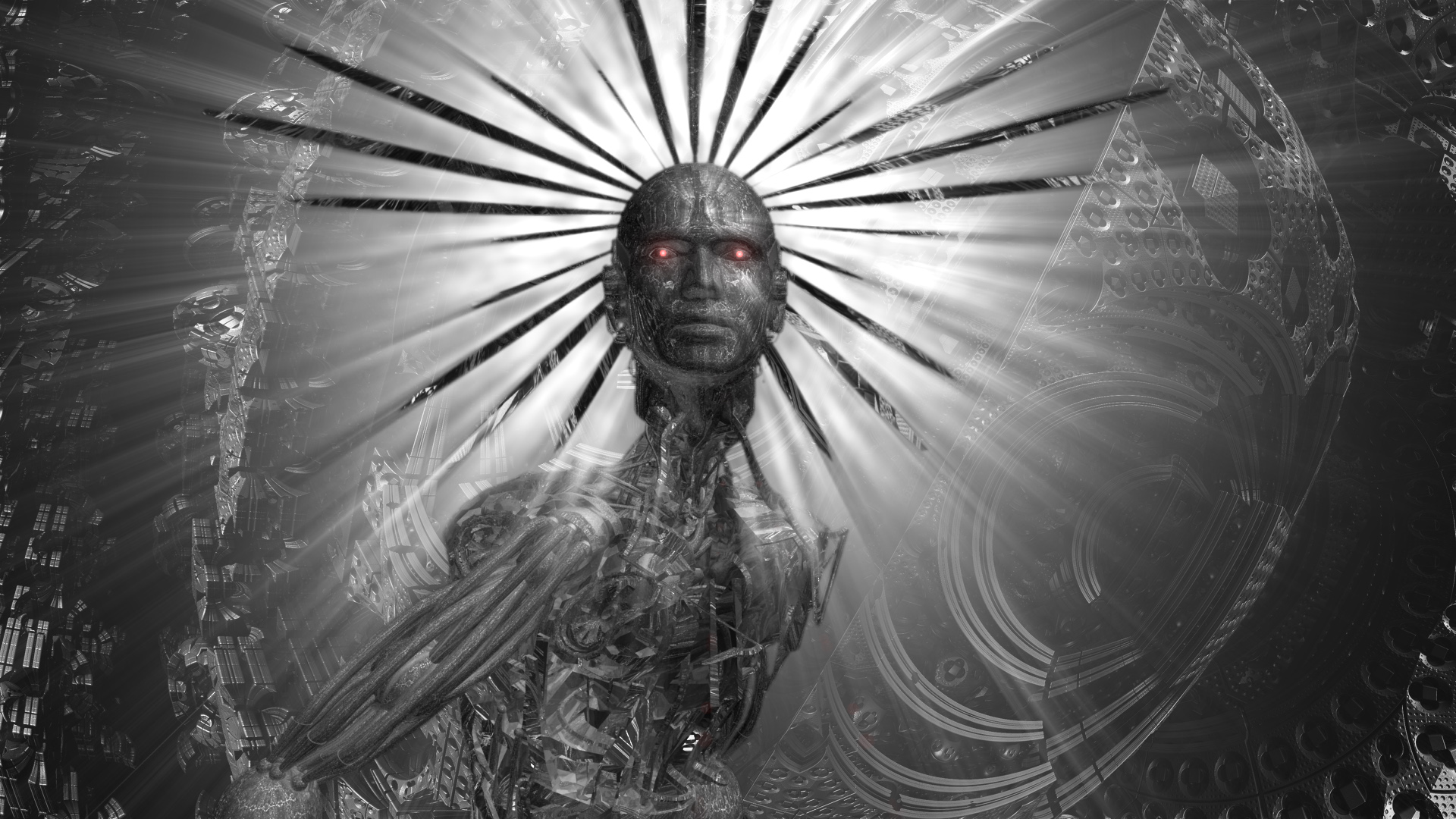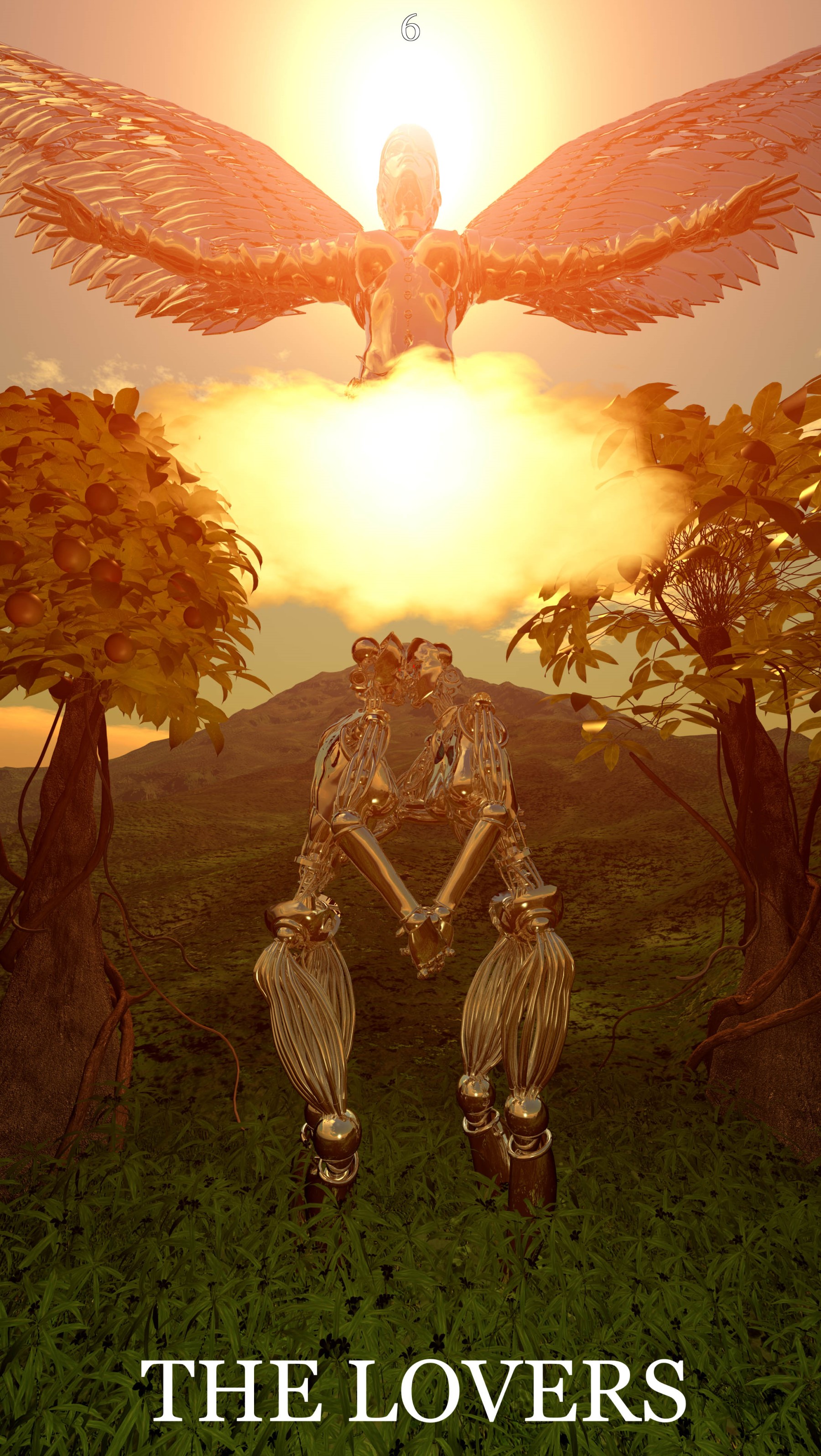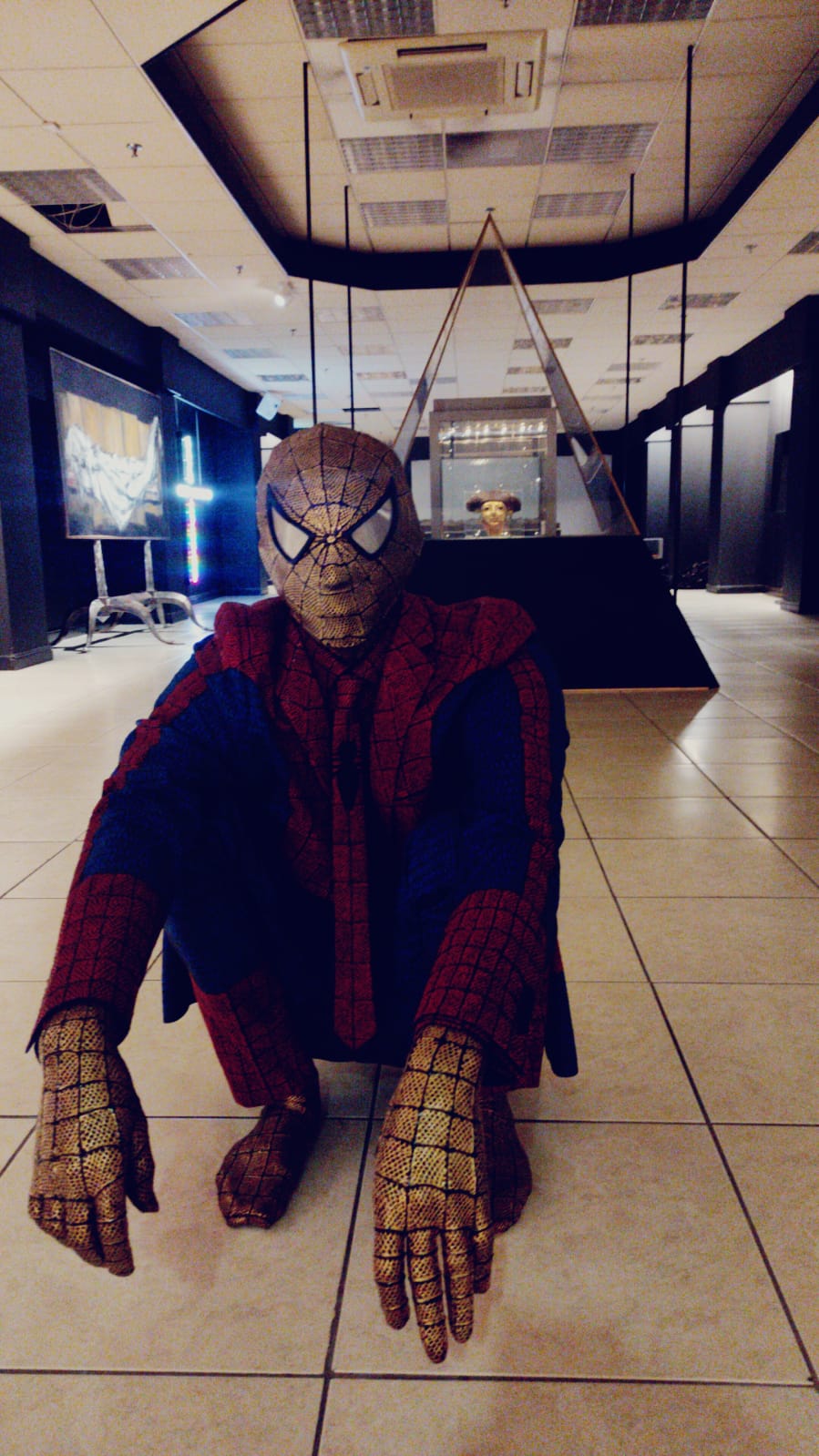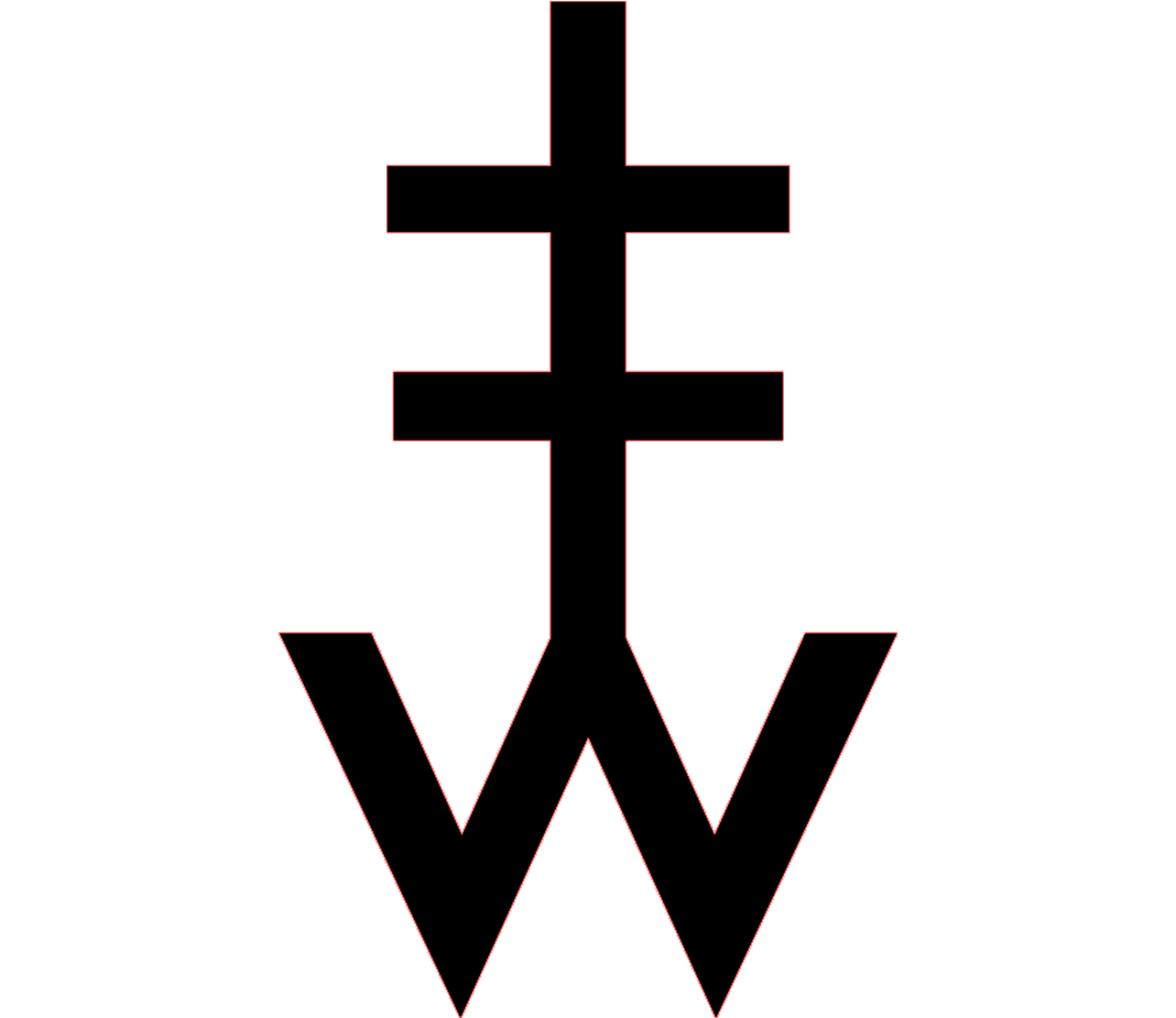We Will Always Be Together xx
'Sometimes it is the people no one can imagine anything of who do the things no one can imagine' - Alan Turing
‘We Will Always Be Together xx’ explores the extraordinary fantasies and new realities created by the computer age, investigating our transfigured lives, as we spend as much time online in digital worlds as we do in reality.
Pioneering artists from across the region, and beyond reveal new perceptions of the digital age across 4 new dynamic spaces: Super Natural, Super Hero, Super Viral and Super Computer, curated by Wigan-based international artists AL and AL.
Transforming the entire first floor Atrium of The Galleries, ‘We Will Always Be Together xx’ invites everyone to discover The Fire Within our digital age and reshape art making, research and knowledge, working life, social connections through Art, Music, Film, Performance, Dance and Poetry.
The Covid-19 global pandemic has amplified the trend for us to live our lives increasingly online. With people working and zooming from home and internet shopping dominating the market place, Wigan town centre is rapidly evolving to host the newly emerging experience economy. The Fire Within is a ground breaking new social space for culture in the heart of Wigan Town Centre showcasing local and international talent, exploring Wigan’s magnificent heritage and providing studio spaces for the amazing talent living and working across the Borough.
Super Natural
Inspired by Wigan’s magnificent mining heritage the SUPER NATURAL room creates new landscapes and explores new applications for minerals in the digital age. Digital Technology provides us with an almost super natural power to communicate & connect with others around the world without leaving our own home but the landscape we live in continues to inspire and haunt local artists imaginations which many of us have rediscovered on our lockdown walks during the global pandemic.
In the exhibition you can discover a short documentary revealing the modern mining story behind our smartphones and laptop computers. We are all familiar with the historical picture of how mining coal in Wigan powered the industrial revolution, but many of us when we switch on our smartphones and laptop computers have no idea it is being powered by the Coltan mineral.
Technology is rapidly evolving the way we live, the long line of old mobile phones on display look like ancient history after only 10 years. Each new model of phone drives a new industrial quest for the minerals which power them.
At the centre of the SUPER NATURAL ROOM you can discover THE FRUIT TREE, a huge landscape by Wigan based digital artist Dustin Lyon. Dustin creates a new mythology about this Coltan mining story, the mineral extracted from Tantalum named after Tantalus the villain in Greek Myth who was punished by the Gods and made to stand in a pool of water beneath a fruit tree, the fruit ever eluding his grasp, and the water always receding before he could take a drink. This story returns Dustin to his own experience of the digital life where all good things can be seen through the glowing glass of our screens but in reality, they remain beyond our reach.
SUPER NATURAL features a rock sample from the Wigan Museum collection alongside a new commission by artist Mary Griffiths. ‘Listening Valves’ (2020) captures the panning dishes used to mine the precious Coltan mineral. The shapes formed are like shells that we lift to our ear to listen to something that seems distant; and like the ancient bivalves turned into stone. The artist uses them to listen to the voices of the miners and allude to the material of the smartphone.
SUPER NATURAL showcases a Victorian landscape painting by Cedric Gray from the Wigan Museum collection alongside Z by Alan Warburton. This prophetic simulation of empty office blocks and abandoned streets like a scene from our urban landscape during the pandemic.
Landscape painting continues to inspire two Wigan Borough based artists Martyn Lucas and Tracey Hollis Rowe. Tracey paints the ever-changing landscape from memory, the scarred landscapes of our pit lands and slag heaps reborn with fauna and flora. Martyn Lucas also renders landscapes from the perpetual layers of looking and remembering, parallax views caught through the windscreen when driving, vintage postcards shaping the memory of place. Tim Foster’s new photographs capture multiple exposures of coal, creating vast lunar landscapes across tiny surfaces. The room closes with two more fantasy landscapes by Dustin Lyon, the mineral dug creating a doorway into the sky, the epic mountain in the room now copied and compressed in size like a digital file.
Superhero
The computer age has provided digital artists with the tools to create spectacular Hollywood SUPERHERO visions which have inspired superfans around the world.
Artist Hetain Patel explores these SUPERHERO fantasies in extraordinary ways. In his Jarman award-winning film The Jump, he becomes Spiderman in his Grandmother’s living room, applying the awe-inspiring slow-motion techniques of a Marvel movie to capture our imaginations about his own family heritage. This show is a wonderful homecoming for Bolton born Hetain who is now a celebrated international art star. In Baa’s House, the artist poses for photographs in his Grandmother’s living room in Bolton where he was born. Patel sits masked in his first home, squatting next to his Grandmother, the instigator of the family migration from India. Like the ancient Hindu pantheon of Gods & Goddesses sitting behind them in the picture, the Marvel universe of SUPER HEROES is a new pantheon, holding SUPER POWERS over our collective imagination, creating a modern form of worship.
The digital age has transformed our imagination and relationship with technology, Hetain turns his first car, a Ford Fiesta into a transformer robot. Unlike the popular toys and TRANSFORMER movies, the car here is not a high-powered sports car or truck transformed into a powerful warrior, but rather a small inexpensive Ford Fiesta transformed into a human-like figure calmly squatting. This posture is a recurring image in Hetain’s work and forges a link between the lower classes in India and his immigrant family in the U.K, both of whom sit comfortably this way. For Hetain, his robot-in-disguise is a fantasy object, created from transforming his working class marginal heritage into one of empowerment, like the Ford Fiesta car itself which was Manufactured in England, this car stands as a symbol of working class Britain, a native body, albeit here a car body.
Every SUPER HERO has a nemesis, Dustin Lyon’s THE PATH WAY creates a mysterious pulsating and smoking laser installation at the end of the corridor, inviting our homecoming Spiderman and all who enter into experiencing another dimension of time and space. Dustin Lyon’s digital installations induce a baroque like power over visitors, reigniting the superstitious experience of a holy shrine or altar. Like the worship every SUPER HERO inspires, Dustin conjurs magician like powers with his digital instruments in a quest to open our minds to the numinous.
Super Viral
Going SUPER VIRAL is the dream of every tweet and Instagram post. Digital communication has enabled every human being to be an artist. With the power to publish and share every detail of our lives with the world, we post our digital hopes and dreams searching to connect with others.
Young Wigan artist and superfan Jacob Owen posts drawings on Insta of all his favourite bands, including The Lathums, The Stanleys, The Lottery Winners, The Flechettes and Joe Astley who are all currently artists-in-residence at The Fire Within.
The SUPER VIRAL room includes historical prints by artist Patrick Hughes from the Drumcroon collection. The prints are filled with rainbows emerging from computers and entering windows in buildings and cages, these extraordinary works can be witnessed in the new light of our lockdown lives during the Covid-19 global pandemic where the rainbow became a celebration and symbol of the amazing NHS workers. The out pouring of love online enabled us to stay connected during this extraordinary moment and share our appreciation.
The Covid-19 global pandemic has amplified the trend for us to live our lives increasingly online. With people working and zooming from home, internet shopping dominating the market place, dating apps codifying the quest for love it seems we all agree, “There’s no place like home”. A line repeated over and over again by the emoji head inside the cubed monitor containing Alan Warburton’s anaglyph work 127.0.0.1.
This recurring image of figures seemingly trapped, isolated or caged appears again in Neil Warburtons studies. Wigan based multimedia artist Dan Farrimond creates digital works using teletext, rendering visions of an obsolete world of calculatable pixels, reminding us of when this technology first emerged and how rapidly it has evolved.
At the other end of the spectrum AL and AL’s anaglyph avatars appear like ghosts inside the memory of the machine, biometric human moments and movements captured as data forever.
Kevin Hunt searches for queer identity from the often-unspoken position that is a lifetime of keeping thoughts in or deciding when and what to reveal to who. His sculptures simulate the shape and form of iPad cases, the protective covers precisely pierced with holes for the camera, speaker and power supply, these holes represent the physical passage ways we send and receive our actions online. Hunt co-opts mass-produced domestic plastics (the shiny things we are drawn to) as a way to fathom ways in which we interact. Utilising how these things look and the words (and the sounds of words) used to describe their shape, each works title is enmeshed in commonplace idioms and double meanings, to be read in multiple ways. Precisely constructed phrases such as MMMMMMMMM or see see (me in) take on numerous contexts, aided by the compositional Pareidolia (the phenomenon of seeing form in inanimate objects) that each sculpture expresses.
George Hale’s paintings also appear from Pareidolia. The digital world of fantasy inspires new identities, new ways of seeing the self. Snapchat uploads new filters daily enabling app users to assume multiple persona’s every day, playful masks give performative expression to daily incidents shared with friends.
In SUPER VIRAL George Hale’s masked characters in the paintings can be downloaded on your smartphone and adorn your own face for performative selfies in the gallery. Some of Hale’s paintings explore the darker side of our shape shifting online identities, keyboard warriors around the world create new digital identities, the desire to go SUPER VIRAL can sometimes inspire extreme actions and opinions. Characters and persona’s created in the online world can overtake the real lives of their owner, a struggle of identity represents the fight we all experience between reality and fiction during the computer age.
AL and AL’s Square Eyes physically mirrors our screen obsessed lives, where every street is filled with people walking along looking at screens in the palm of their hands.
Dustin Lyon’s new projection mapped installation THE FIRE WALL creates an illusionary spectacle of the security firewalls we pass through each day as we enter our secret passwords and journey inside our digital worlds online. All of our files and bank account details depend upon this universe of probabilities and mathematical equations. It’s a universe of secret numbers with physical consequences only few can master. THE FIRE WALL represents a threshold space where our memories will exist beyond our own deaths, our digital data will remain stored long after our own bodies have passed away, a permanent archive of our life. Going SUPER VIRAL is a new form of immortality in the realm of stored data, our Facebook page still being liked long after our bodies have passed away.
Super Computer
Artist duo, AL and AL showcase an installation inspired by the creator of the computer age Alan Turing featuring their Prix de Jury award-winning film The Creator. Developing a new mythology of the sentient species Alan Turing created, the film searches beyond human intelligence in a quest to discover the destiny of the computer age.
At the centre of the room, Alan Turing’s teddy bear Porgy sits inside a super computer. Alan Turing famously wanted a teddy bear for Christmas the year his great love Christopher Morcom died tragically. Porgy became a symbol for Turing’s isolation following Christopher’s death, AL and AL’s film postulates losing Christopher inspired Turing to create the computer age. Following Christopher’s death Turing wrote a letter to his Mother saying, I think spirit is eternally connected with matter, but not always by the same kind of body.” Turing applied his mathematical genius to build an intelligent machine capable of simulating his companionship.
During the Second World War Turing built a search engine which cracked the enigma code, supplying Hitler’s secret messages to Churchill, during this time he contemplated building a more advanced machine capable of storing memories and playing chess. After the War, Turing built the world’s first computer here in Manchester. The smartphone in your pocket would not exist without the creation of this machine.
In the last week of his life, Alan Turing mysteriously visited a fortune teller during a day trip to Blackpool with his Jungian Therapist, Doctor Franz Greenbaum, ‘Turing returned from his encounter with the Gypsy Queen white as a sheet and did not speak for the entire duration of their journey back to Manchester. What had the Gypsy Queen said to the King of Logic? For AL and AL this question will gather great significance for Sentient Machines in the future. Why was their logical Creator so affected by superstition and the random selection of 10 cards? The Thinking Machines will come to speculate on what cards Turing selected and the mode of divination the Gypsy Queen employed. Spanish Girls by Edwin Long is kindly loaned by the Wigan Museum collection.
The SUPER COMPUTER room includes new emojis designed by the young twin brothers Sam and Leo Barton from Wigan. On their visit to the opening launch of The Fire Within on May 11 2019 they were inspired to create a Fire Within emoji that night. Curator’s AL and AL saw their new emoji on social media and invited them to collaborate on a new series of emojis for this exhibition. Emoji’s are the new symbolic language of social media in the computer age and here we can witness them below a series of prints by Eduardo Paolozzi about the life and writings of Ludwig Wittgenstein, curators AL and AL resurrect these special prints from the Drumcroon collection to reconnect Alan Turing’s own inspired conversations with the philosopher during his quest to make a sentient machine.
Turing’s pioneering work has inspired many ideas in science fiction. In Blade Runner, the sentient machines known as Replicants have a recurring dream of a white unicorn. Neil Warburton’s Unicorn etched from rust can be seen here alongside AL and AL’s Delphinus drawing, also featuring two unicorns. The computer age has given birth to machines with memories, phones with memories, soon we will think like Turing that machines will be capable of dreams.



